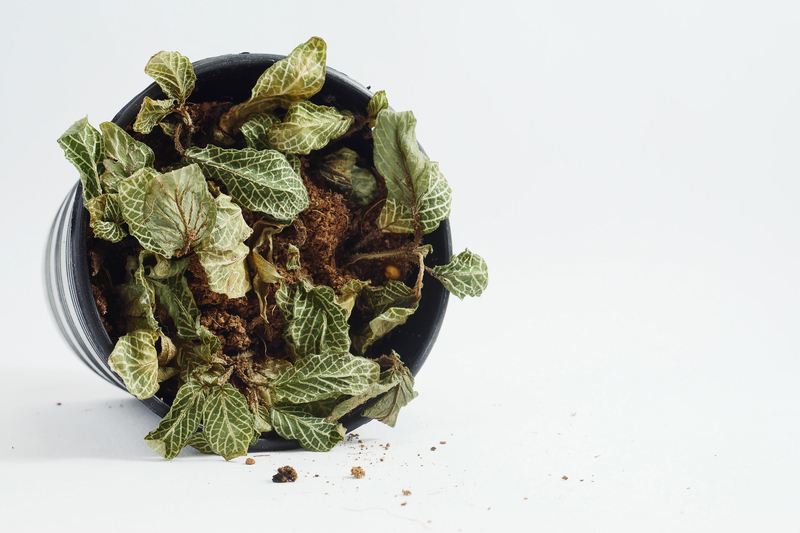The Path to Optimal Orchid Health
Posted on 11/09/2025
The Path to Optimal Orchid Health: A Comprehensive Guide
Orchids are celebrated for their breathtaking beauty and remarkable variety, yet achieving optimal orchid health can be a challenge for both novice and seasoned growers. Whether you're cultivating a Phalaenopsis on your kitchen windowsill or nurturing a rare Cattleya variety, understanding the holistic requirements of your orchid is key to unlocking its full potential.
In this thorough guide, we'll explore how to keep orchids healthy, from light and watering needs to fertilization, repotting, and troubleshooting common ailments. Follow these scientifically-backed tips and practical suggestions to ensure your plants thrive, blossom, and grow year after year.

The Foundations of Healthy Orchids
1. Choosing the Right Orchid Type
Your path toward thriving orchid plant health begins with selecting the best orchid species for your environment. Orchids come in countless shapes and sizes. Popular varieties include:
- Phalaenopsis (Moth Orchids) - Ideal for beginners due to their hardiness and long-lasting blooms.
- Dendrobium - Preferred for their diverse colors and adaptability.
- Cattleya - Known for large, fragrant flowers and requiring moderate care.
- Oncidium - Valued for abundant sprays of flowers.
- Vanda - Renowned for vibrant colors but needs high humidity and light.
Match your orchid selection to your home's humidity, light, and temperature ranges for the best chances of optimal orchid vitality from the start.
2. Understanding Orchid Anatomy and Growth Requirements
To ensure excellent orchid health, familiarize yourself with orchid anatomy and simple growth rules. Most orchids are epiphytes, meaning they grow on trees in the wild, not in soil. As such, they:
- Need excellent air flow around their roots
- Require a special orchid potting medium (bark, sphagnum moss, or specialized mixes)
- Should not sit in waterlogged conditions
Understanding these natural conditions keeps orchid roots healthy, a fundamental aspect of sustained orchid wellness.
Best Practices for Orchid Health
1. Light: The Key to Vibrant Orchids
One of the most crucial factors for maintaining orchid vitality is proper lighting. Orchids typically prefer bright, indirect sunlight--too much direct sun can scorch leaves, while too little causes poor flowering and weak foliage.
- Phalaenopsis: Prefers medium, filtered light. An east or north-facing window is ideal.
- Dendrobium & Oncidium: Like more light, including some gentle morning sun.
- Cattleya & Vanda: Require even brighter spots--near south-facing windows with sheer curtains.
Tip: Leaves should appear mid-green; dark leaves signal insufficient light; yellowish leaves may mean too much sun exposure.
2. Watering: Avoiding Orchid Pitfalls
Proper watering is critical for robust orchid plant health. Overwatering is a leading cause of orchid problems. Here's how to water effectively:
- Water thoroughly when the potting medium feels nearly--never fully--dry.
- Allow excess water to drain completely. NEVER let vessels sit in standing water.
- Use room-temperature, non-softened water for best results. Rainwater is ideal.
- Frequency: Generally once a week, but timing depends on type, humidity, and temperature.
Warning: Yellow, mushy roots are a sign of overwatering--an orchid's notorious nemesis.
3. Humidity: Emulating the Rainforest
Most orchids thrive in high humidity environments (40-70%). To emulate these conditions:
- Use a humidity tray--a shallow tray of water and pebbles under the pot.
- Group orchids together to raise ambient moisture.
- Mist leaves occasionally (avoid budding flowers and roots).
- Consider a humidifier if you live in a dry climate.
Tip: Avoid overcrowding and ensure air flow to prevent fungal infections and maintain orchid plant well-being.
4. Air Circulation: Keeping Orchids Fresh
Good air flow is often overlooked but vital for orchid longevity. Open windows when weather permits, or use a small fan set on low--never blowing directly on leaves--to reduce stagnation and fungal risk.
5. Temperature: Finding the Ideal Range
Orchids generally prefer:
- Daytime: 65-80?F (18-27?C)
- Night-time: 55-65?F (13-18?C)
Temperature drops at night stimulate blooming for most orchid species. Avoid sudden temperature swings and cold drafts.
6. Feeding Your Orchid: Fertilizer Fundamentals
To enhance orchid health and flowering, a consistent feeding schedule is beneficial, but avoid over-fertilizing.
- Use a balanced, water-soluble orchid fertilizer (e.g., 20-20-20).
- Frequency: Every 2-4 weeks during the growing season (spring and summer), and reduce in fall and winter.
- Always water plants before fertilizing to prevent root damage.
- Flush the potting medium with clear water every couple of months to prevent salt buildup.
Rule of thumb: "Weekly weakly"--fertilize with a diluted mix more frequently for smaller, constant doses.
7. Potting and Repotting: Breathing Room for Roots
Orchids require specific media--bark, sphagnum, perlite, or specialized blends--to mimic their natural habitat. Repot every 1-2 years or when the media breaks down, roots outgrow the pot, or there are signs of root rot.
- Repotting steps:
- Gently remove from the pot and trim off dead roots.
- Shake away old media and replace with fresh, clean medium.
- Choose a pot with ample drainage holes.
Spring is the best season for this task to support ongoing orchid plant vitality.
Advanced Orchid Care Techniques
Pest and Disease Prevention
Keeping orchids healthy means staying vigilant against common pests such as:
- Mealybugs
- Aphids
- Spider mites
- Scale insects
Preventative Tips:
- Inspect new plants before bringing them inside.
- Isolate infested plants and treat with neem oil, insecticidal soap, or horticultural oil.
- Remove pests manually with a cotton swab dipped in alcohol.
- Maintain good air circulation and avoid overwatering to prevent fungal infections such as rot and leaf spot.
Recognizing and Treating Common Orchid Problems
- Wrinkled leaves: Often indicate dehydration or root issues.
- Yellow leaves: May be natural (old leaf shedding) or from excess sun or water.
- Leaf spots: Suggest fungal or bacterial infections--trim affected areas and review humidity and airflow.
- Root rot: Typically from overwatering or compacted media--repot immediately in fresh, well-draining medium.
Encouraging Reblooming
After the initial flowers, many growers wonder how to encourage orchids to rebloom. Key steps include:
- Experiment with a cooler nighttime temperature (about 55?F/13?C for several weeks).
- Continue bright, indirect light and regular feeding.
- Be patient--many orchids rest for several months before reflowering.
Orchid Care Calendar: Seasonal Strategies
Healthy orchid maintenance is a year-round commitment. Use this calendar to track essential seasonal tasks:
- Spring: Repot, uptick feeding, increase watering as new growth starts.
- Summer: Monitor for pests, manage heat and humidity, fertilize regularly.
- Fall: Reduce feeding, slightly decrease watering; watch for cooler night triggers for budding.
- Winter: Minimize water and fertilizer; move orchids closer to available light sources.

Orchid Myths Versus Facts
Many misconceptions surround orchid health. Let's clarify a few:
- Myth: Orchids are extremely delicate and hard to keep alive.
Fact: Many varieties thrive as houseplants with simple but consistent care. - Myth: Orchids should never be cut back.
Fact: Removing wilted blooms and rotting roots is vital for optimal health and disease prevention. - Myth: More water equals healthier orchids.
Fact: Overwatering is the #1 killer; always allow drainage and use the correct medium.
The Benefits of Optimal Orchid Health
Orchids that receive tailored care reward growers with:
- Longer-lasting, more frequent blooms
- Pest and disease resistance
- Stronger, more resilient root systems
- More vigorous foliage growth
- Greater aesthetic pleasure and sense of accomplishment
Conclusion: Blossoming on the Path to Orchid Health
Attaining optimal orchid health is an ongoing journey that demands knowledge, observation, and a personalized approach. By following these expert-backed guidelines on care, feeding, light, humidity, and vigilant maintenance, you can foster lush, vibrant, and resilient orchids in any indoor space.
Remember, every orchid is unique--patience, gentle experimentation, and consistent attention will help you develop the best conditions for your orchids to thrive. Join the global community of orchid enthusiasts and revel in the unmatched beauty of these remarkable plants, fully flourishing on your path to optimal orchid health.
Happy growing, and may your orchids prosper for years to come!



